-
bool List::InsertHead(Node *pNode)
{
Node* temp = m_pList->next;
Node* newNode = new Node;
if(newNode == NULL)
{
return fasle;
}
newNode->data = pNode->data;
m_pList->next = newNode;
newNode = temp;
return true;
}
bool List::InsertTail(Node *pNode)
{
Node* currentNode = m_pList;
while(currentNode->next != NULL)
{
currentNode = currentNode->next;
}
Node* newNode = new Node;
if(newNode == NULL)
{
return fasle;
}
newNode->data = pNode->data;
newNode->next = NULL;
currnetNode->next = newNode;
return true;
}
查看全部 -
bool List::InsertHead(Node *pNode)
{
Node* temp = m_pList->next;
Node* newNode = new Node;
if(newNode == NULL)
{
return fasle;
}
newNode->data = pNode->data;
m_pList->next = newNode;
newNode = temp;
return true;
}
bool List::InsertTail(Node *pNode)
{
Node* currentNode = m_pList;
while(currentNode->next != NULL)
{
currentNode = currentNode->next;
}
Node* newNode = new Node;
if(newNode == NULL)
{
return fasle;
}
newNode->data = pNode->data;
newNode->next = NULL;
currnetNode->next = newNode;
return true;
}
查看全部 -
void List::ClearList()
{
Node *currentNode = m_pList->next;
while(currentNode != NULL)
{
Node *temp = currentNode->next;
delete currentNode;
currentNode = temp;
}
m_pList->next = NULL;
}
List::~List()
{
ClearList();
delete m_pList;
m_pList = NULL;
}
查看全部 -
List::List()
{
m_pList = new Node;
m_pList->data = 0;
m_pList->next = NULL;
m_pList->iLength = 0;
}
bool List::ListEmpty()
{
if(m_iLength == 0)
{
return true;
}
else
{
return false;
}
}
int List::ListLength()
{
return m_iLength;
}
查看全部 -
1234567
查看全部 -
数据结构之线性表
查看全部 -
析构函数(destructor) 与构造函数相反,当对象结束其生命周期,如对象所在的函数已调用完毕时,系统自动执行析构函数。 析构函数往往用来做“清理善后” 的工作(例如在建立对象时用new开辟了一片内存空间,delete会自动调用析构函数后释放内存)。
查看全部 -
do more
查看全部 -
建立链表的时候,头结点我们把数据域设置为固定的0,并且这个数据域没有任何意义,这个头结点存在的意义只是为了指向这一条链表。 头结点之后的第一个节点, 我们认为他是第0个节点。
建立一个毫无意义的头结点的好处在于:
1、可以很好的固定住链表的入口
2、再清空整个链表的时候(清空不是释放),可以留有一个入口记录下链表的内存位置。 如果没有这个节点,把链表清空了 就相当于释放了
查看全部 -
什么是线性表:n个 数据元素的有限序列
1、顺序表:使用数组,访问速度快,搜索能力强(数组本身就有下标)
2、链表:静态链表、单链表、循环链表、双向链表
栈与队列都是一种特殊的操作受限的线性表,只允许在端点处进行插入和删除,二者的区别是:栈只允许在表的一端进行插入和删除操作,是一种“后进先出”的线性表;而队列是允许在一端进行插入操作,在别一端进行删除和操作,是一种”先进先出“的线性表
线性表的应用场景:通讯录、一元多项式
查看全部 -
List.h: //修改主要: //1.将Elem改为Node //2.加了两个操作:一个向头插入节点,一个向尾插入节点 #ifndef INC_0131_LIST_H #define INC_0131_LIST_H #include "Node.h" class List { public: List();//先放一个头节点,不需要size作为参数 ~List(); void ClearList();//清空链表较为麻烦 bool ListEmpty(); int ListLength(); bool GetElem(int i, Node *pNode);//获取指定元素 int LocateElem(Node *pNode);//寻找第一个满足e的元素的位序 bool PriorElem(Node *pCurrentNode,Node *preNode);//获取指定元素的前驱 bool NextElem(Node *pCurrentNode,Node *pNextNode);//获取指定元素的后继 bool ListInsert(int i,Node *pNode); bool ListDelete(int i,Node *pNode); void ListTraverse();//遍历链表元素 bool ListInsertHead(Node *pNode);//插入头节点的下一个节点 bool ListInserTail(Node *pNode);//插入到最后一个节点 private: Node *m_pList; //int m_iSize;//链表不需要 int m_iLength; }; #endif //INC_0131_LIST_HList.cpp: //n 2020-02-06. // #include "List.h" #include <iostream> #include "Node.h" using namespace std; //构造函数 List::List() { m_pList = new Node;//头节点 m_pList->data = 0;//头节点的数据域没有意义 m_pList->next = NULL; m_iLength = 0;//头节点不计入 } void List::ClearList() { //顺藤摸瓜式清除,先找头节点,直到找到指针域为空,用while循环 Node *currentNode = m_pList->next; while(currentNode != NULL){ Node *tmp = currentNode->next; delete currentNode;//释放掉当前currentNode的内存 currentNode = tmp; } //不要忘记将头节点的next置为0 m_pList->next = NULL; } //析构函数:将整个内存释放掉, //与ClearList有异曲同工之处:~List需要将头节点和后续所有节点都释放掉,而ClearList不需要释放头节点 List::~List(){//可以利用已经写好的clearlist ClearList(); delete m_pList; m_pList =NULL; } bool List::ListEmpty() { if(m_iLength == 0){ return true; } else { return false; } } int List::ListLength(){ return m_iLength; } bool List::ListInsertHead(Node *pNode){ Node *tmp = m_pList->next; Node *newNode = new Node;//一定要从堆中去申请内存,因为如果从栈中申请内存,函数执行完成之后这个内存就被回收了 //注意考虑内存申请失败的情况 if(newNode == NULL){ return false; } newNode->data = pNode->data; m_pList->next = newNode; newNode->next = tmp; m_iLength++; return true; } bool List::ListInserTail(Node *pNode){ Node *curentNode = m_pList; while(curentNode->next != NULL){ curentNode = curentNode->next; } Node *newNode = new Node; if(newNode == NULL){ return false; } newNode->data = pNode->data; newNode->next = NULL; curentNode->next = newNode; m_iLength++; return true; } bool List::ListInsert(int i,Node *pNode){ if(i < 0 || i > m_iLength){ return false; } Node *currentNode = m_pList; for(int k = 0;k < i;k++){ currentNode = currentNode->next; } //自己写:找到插入的位置 Node *newNode = new Node; if(newNode == NULL){ return false; } // newNode = currentNode->next; // currentNode->next = pNode; // pNode->next = newNode; //错误,为什么? newNode->data = pNode->data; newNode->next = currentNode->next; currentNode->next = newNode; m_iLength++; return true; } bool List::ListDelete(int i,Node *pNode){ if(i < 0||i >= m_iLength){ return false; } Node *currentNode = m_pList; Node *currentNodeBefore = NULL; for(int k = 0;k <= i ;k++){ currentNodeBefore = currentNode; currentNode = currentNode->next; } currentNodeBefore->next = currentNode->next; pNode->data = currentNode->data; delete currentNode; currentNode = NULL; m_iLength--; } bool List::GetElem(int i, Node *pNode){ if(i < 0 || i >= m_iLength){ return false; } Node *currentNode = m_pList; Node *currentNodeBefore = NULL; for(int k = 0;k <= i ;k++){ currentNodeBefore = currentNode; currentNode = currentNode->next; } pNode->data = currentNode->data; return true; } int List::LocateElem(Node *pNode){ Node *currentNode = m_pList; int i = 0; while(currentNode->next != NULL){ currentNode = currentNode->next;//对链表进行遍历,对比数据域 //i++;不应该写在这里,只有不相同时才++ if(currentNode->data == pNode->data) {//返回什么?位置?而且只返回第一个符合的值(可能有多个) return i; } i++;//不写在if语句之前,因为m_pList的数据域无效。 } //如果一个节点都没有找到,易忽略 return -1; } bool List::PriorElem(Node *pCurrentNode,Node *preNode){ Node *currentNode = m_pList; Node *tempNode = NULL; while(currentNode->next != NULL){ tempNode = currentNode; currentNode = currentNode->next; if(currentNode->data == pCurrentNode->data){ if(tempNode == m_pList){//如果当前节点的前驱是头节点 return false; } preNode->data = tempNode->data; return true; } } } bool List::NextElem(Node *pCurrentNode,Node *pNextNode){ Node *currentNode = m_pList; while(currentNode->next != NULL){ currentNode = currentNode->next; if(currentNode->data == pCurrentNode->data){ if(currentNode->next == NULL){ return false; } pNextNode->data = currentNode->next->data; return true; } } } void List::ListTraverse(){ Node *currentNode = m_pList; while (currentNode->next != NULL){ currentNode = currentNode->next; currentNode->printNode(); } }Node.h: // // Created by w on 2020-02-07. // #ifndef INC_0131_NODE_H #define INC_0131_NODE_H class Node{ public: int data;//数据域,直接写在public下边就是为了方便付值 Node *next;//指针域 void printNode(); }; #endif //INC_0131_NODE_HNode.cpp: // // Created by x on 2020-02-07. // #include <iostream> #include "Node.h" using namespace std; void Node::printNode(){ cout << data <<endl; }main.cpp: #include <iostream> #include <stdlib.h> #include "List.h" using namespace std; //int a=3,b=5 ; //printf( "max=%d\n" , max(a,b) ); //这里的a,b就是实参 //int max( int a , int b ) ;//这里的a,b就是形参 //在main函数中 // 调用函数swap(&a,&b); //定义函数时: //void swap(int *a, int *b); //这个是配套使用的。 int main(){ Node node1;//括号加了会出错?why? node1.data = 3; Node node2;//括号加了会出错?why? node2.data = 4; Node node3;//括号加了会出错?why? node3.data = 5; Node node4;//括号加了会出错?why? node4.data = 6; List *pList = new List(); Node node5; node5.data =7; Node tmp; // pList->ListInsertHead(&node1); // pList->ListInsertHead(&node2); // pList->ListInsertHead(&node3); // pList->ListInsertHead(&node4); // pList->ListTraverse(); pList->ListInserTail(&node1); pList->ListInserTail(&node2); pList->ListInserTail(&node3); pList->ListInserTail(&node4); pList->ListInsert(1,&node5); // pList->ListDelete(1,&tmp); pList->PriorElem(&node5,&tmp); pList->ListTraverse(); cout << "tmp = " << tmp.data <<endl; delete pList; pList = NULL; return 0; }查看全部 -
为什么有了顺序表还需要链表,因为两者互为补充
顺序表的优缺点:
优点:遍历和寻址时非常方便(因为基于数组)
缺点:插入删除元素
链表:
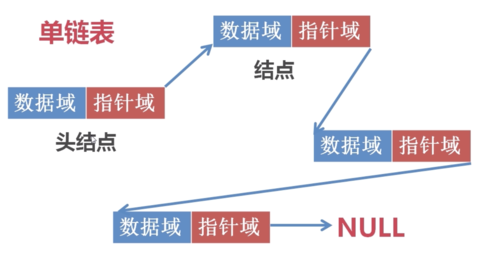
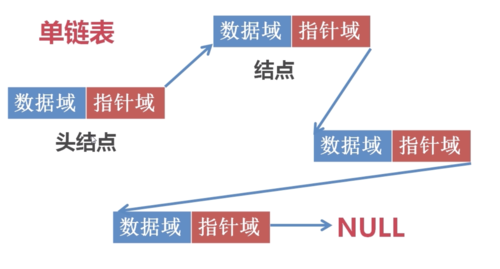

有些计算机语言没有指针:
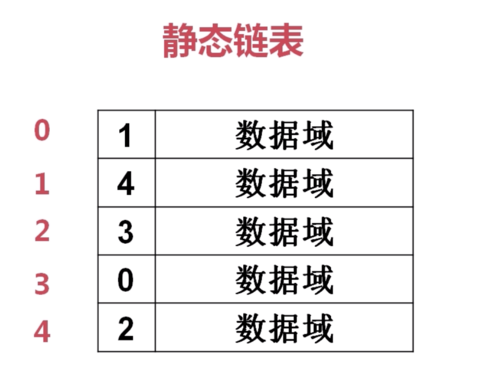 查看全部
查看全部 -
未完成,待细学
查看全部 -
List.h: // #ifndef INC_0131_LIST_H #define INC_0131_LIST_H class List { public: List(int size); ~List(); void ClearList();//清空线性表不等于释放内存 bool ListEmpty(); int ListLength(); bool GetElem(int i, int *e);//获取指定元素 int LocateElem(int *e);//寻找第一个满足e的元素的位序 bool PriorElem(int *currentElem,int *preElem);//获取指定元素的前驱 bool NextElem(int *currentElem,int *nextElem);//获取指定元素的后继 bool ListInsert(int i,int *e); bool ListDelete(int i,int *e); void ListTraverse();//遍历链表元素 private: int *m_pList; int m_iSize; int m_iLength; }; #endif //INC_0131_LIST_HList.cpp: //n 2020-02-06. // #include "List.h" #include <iostream> using namespace std; //构造函数 List::List(int size) { m_iSize = size; //c++中分配内存,确定此线性表的容量: m_pList = new int[size]; m_iLength = 0; } //析构函数:作用主要是将在构造函数中申请的内存释放掉 List::~List() { delete []m_pList; m_pList = NULL;//iSize置0无所谓,因为内存被释放后该对象也不存在了 } void List::ClearList(){ m_iLength = 0; } bool List::ListEmpty(){ if(m_iLength == 0){ return true; } else{ return false; } //也可: //reture m_iLength == 0 ? true :false; } int List::ListLength(){ return m_iLength; } bool List::GetElem(int i,int *e){ if(i < 0 || i >= m_iSize){ return false; } *e = m_pList[i]; return true; } int List::LocateElem(int *e){ for(int i = 0;i < m_iLength;i++) { if(m_pList[i] == *e) { return i; } } return -1; } bool List::PriorElem(int *currentElem,int *preElem){ int tmp = LocateElem(currentElem); //不是先判断是否是第一个元素,先判断是否找得到这个数 if(tmp == -1){ return false; } else{ if(tmp == 0){ return false; } else{ *preElem = m_pList[tmp - 1];//注意是*preElem return true; } } } bool List::NextElem(int *currentElem,int *nextElem){ //判断是否存在这样一个元素 int tmp = LocateElem(currentElem); if(tmp == -1){ return false; } else{ if(tmp == m_iLength-1){ return false; } else{ *nextElem = m_pList[tmp+1]; return true; } } } //自己写的,有错误 //bool List::PriorElem(int *currentElem,int *preElem){ // //先判断是否是第一个元素 // int tmp = LocateElem(currentElem);//注意用之前写好的函数 // if(tmp == 1){ // return false; // } else { // preElem = m_pList[tmp - 1]; // return true; // } //} // //bool List::NextElem(int *currentElem,int *nextElem){ // //先判断是否为最后一个元素 // int tmp = LocateElem(currentElem); // if(tmp == m_iLength-1){ // return false; // } else{ // nextElem = m_pList[tmp+1]; // return true; // } //} void List::ListTraverse(){ for(int i = 0; i < m_iLength;i++){ cout << m_pList[i] <<endl; } } bool List::ListInsert(int i,int *e){ //先判断是否超过size了 if(m_iSize == m_iLength || i < 0 || i > m_iLength){//已经满了或i不符合标准 return false; } else{ for(int k = m_iLength - 1; k >= i; k--){ m_pList[k+1] = m_pList[k]; } m_pList[i] = *e; m_iLength++;//容易忘 return true;//记得返回正确 } } bool List::ListDelete(int i,int *e){ //先判断i是否合法 if(i < 0 || i >= m_iLength){ return false; } *e = m_pList[i]; for(int k = i+1;k < m_iLength;k++){ m_pList[k-1] = m_pList[k]; } m_iLength--; return true; }main.cpp: #include <iostream> #include <stdlib.h> #include "List.h" using namespace std; int main(){ int e1 = 1; int e2 = 2; int e3 = 3; int e4 = 4; int e5 = 5; int e6 = 6; int tmp = 1; List *list1 = new List(10); cout << "length:" << list1->ListLength() <<endl; list1->ListInsert(0,&e1); cout << "length:" << list1->ListLength() <<endl; list1->ListInsert(1,&e2); list1->ListInsert(2,&e3); list1->ListInsert(3,&e4); list1->ListInsert(4,&e5); list1->ListInsert(5,&e6); list1->ListDelete(0,&tmp); cout << "#" << tmp <<endl; if(!list1->ListEmpty()){ cout << "not empty" <<endl; } list1->ClearList(); list1->ListTraverse(); list1->ListInsert(0,&e1); list1->ListInsert(1,&e2); list1->ListInsert(2,&e3); list1->ListInsert(3,&e4); list1->ListInsert(4,&e5); list1->ListInsert(5,&e6); list1->GetElem(4,&tmp); cout << "tmp:" << tmp <<endl; cout << list1->LocateElem(&tmp) << endl;//注意是传地址 list1->PriorElem(&e4,&tmp); cout<<"前驱:" << tmp <<endl; list1->NextElem(&e4,&tmp); cout<<"后继:" << tmp <<endl; delete list1; list1 = NULL; return 0; }查看全部 -
顺序表编码:
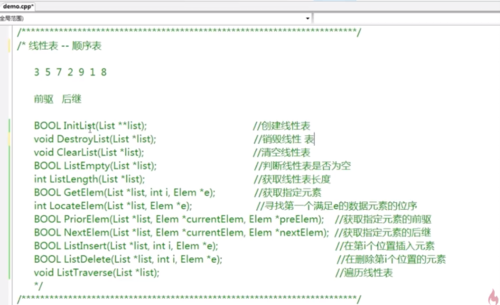 查看全部
查看全部 -
什么是线性表:n个 数据元素的有限序列
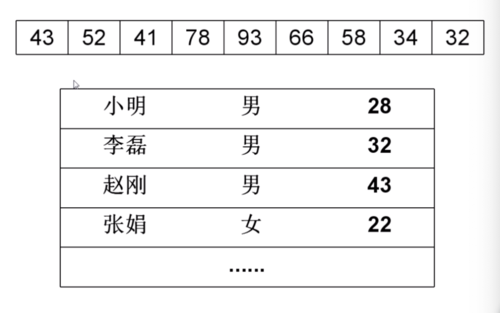
线性表分为
1.顺序表(数组) 2.链表
链表:
1.静态链表
2.单链表
3.循环链表
4.双向链表
线性表的应用场景:通讯录、一元多项式
查看全部 -
头结点没有数据域?
查看全部 -
取出第N个节点的数据,只需要找到该节点,将data部分赋值出去则可
查看全部 -
删除第N个节点
思路:需保留第N个节点的上一个节点
将当前的节点的next赋值给上一个节点的next则可,再释放掉当前节点
查看全部 -
链表插入到第N个节点
原理都是找到要使用的当前节点,新结点被当前节点指,前节点的next赋值给新结点的next
查看全部 -
链表尾部插入新结点
思路:先找到最后一个节点,在申请一个新结点,再让最后一个节点的next指向新结点,并且传参的节点只取了其中的数据,指针是自己new出来的
查看全部 -
链表在头部插入新结点
思路:其实是放到头节点后的第一个位置
并且传参的节点只取了其中的数据,指针是自己new出来的
查看全部 -
循环清空链表的数据 将当前的下一个指针赋值给临时指针 删掉当前指针 再将临时指针赋值给当前指针
查看全部 -
链表:指针域 数据域 头结点 节点
查看全部 -
顺序表缺点:插入删除元素时,顺序表需前移或者后移
查看全部 -
顺序表链表互为补充
查看全部
举报









